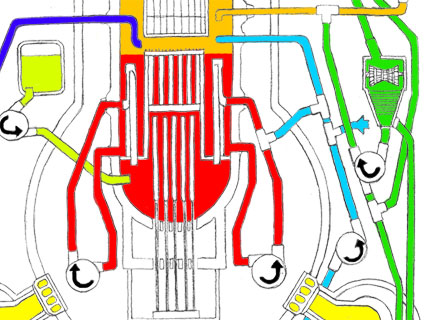Over the weekend the Japanese Science Ministry released data from midweek showing large amounts of radioactive iodine had been discovered in seawater off the coast. According to NHK, “the detected level of iodine-131 was 79.4 becquerels per liter, twice the legal standard for water discharged from nuclear plants.”
This information follows news that has been coming out in dribs and drabs about a supposed crack in the plant and radioactive water leaking into the ground beneath the plant. While the danger of radioactivity in Japan and elsewhere has generally been played down, these discoveries raise several potentially significant questions for Japan, the central and northern Pacific, and in the United States, primarily for Alaska, Washington, and Oregon.
The first involves fish. The Pacific currents running along the Japanese coast go north up the Asian coast before turning towards the Bering Sea, and on down through the Gulf of Alaska to the U.S. northwest coast. These currents mainly move from west to east. Fish are influenced by these currents, and in particular the great stocks of tuna along the warmer waters on, above, and below the equator and in the central Pacific.
In describing the migratory patterns in its Fish Watch report, NOAA writes:
Pacific albacore (sometimes referred to as ‘white tuna’)… typically begin an expansive migration in the spring and early summer in waters off Japan that continues through the late summer into inshore waters off the U.S. Pacific coast, and ends in late fall and winter in the western Pacific Ocean…
Almost all of the albacore harvested in U.S. commercial fisheries comes from the Pacific, mainly from waters off Washington and Oregon. Much of this catch is exported to foreign markets including Spain, Japan, and Canada. The rest is sold in U.S. markets, along with imported albacore, primarily from Thailand and Indonesia.
This raises the possibility that fish that have possibly been exposed to radiation may turn up in canned and frozen fish products imported into the US from Asian markets, as well as from from Alaska and the Pacific Northwest.
Birds are another issue. Consider this, from the International Waterfowl and Wetlands Research Bureau—Japan Committee (IWRBJ):
At least 404 species of waterbird are recorded in the Asia-Pacific region. Of these, 243 species, by virtue of their nature, undertake annual migrations between their breeding areas and nonbreeding grounds, along several different flyways. They visit at least 57 countries and territories in the Asia-Pacific region. A few of these species undertake some of the greatest non-stop flights in the world, covering at least 6,000 km in one step.
Experts and scientists in the United States, appearing on television and in the general press, have assured everyone the radiation hazards are insignificant or minimal at best. But fish and birds can be harbingers of possible problems ahead, and not a lot is known is about what kind and how much they be carrying.










